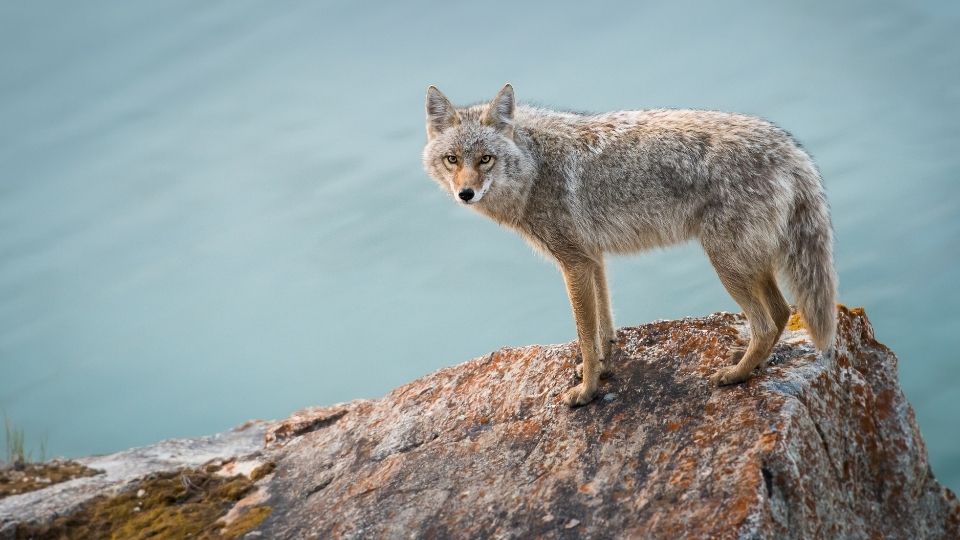The word Coyote is an English word that has three syllables. The correct pronunciation is “kai-yo-tee.” Like any word, the way someone pronounces it can vary depending on where they live and their accent.
Here is the pronunciation of Coyote, which is very similar in other languages:
- Spanish/Mexican: Coyote, pronounced “koh-yoh-teh”
- Italian: Coyote, pronounced “koh-yoh-teh”
- Dutch: Coyote, pronounced “koh-yoh-teh”
- Nahuatl: Coyotl, pronounced “koh-yoh-tel”
When people think of coyotes, they often think of a coyote howling at the moon. While this is accurate, there are many other behaviors and features of coyotes to think of as well.
Table of Contents
7 Coyote Facts
- They have one mate. Once a coyote mates, it will not mate again unless its mate dies. These loyal creatures will not stray from each other.
- They can be very quiet. To reduce the noise they make while moving, coyotes will walk and run on their tiptoes.
- Coyotes are excellent jumpers and can jump a distance of thirteen feet.
- They regurgitate food for their pups. Like birds, the mother and father coyote will kill and eat prey before returning to the den to regorge it to feed the coyote pups.
- Coyotes live about ten years in the wild.
- Coyotes can make eleven sounds. These sounds may be made alone or with their pack: Coyotes woof, growl, huff, howl, yelp, bark, and scream.
- Coyotes give birth to five to seven pups. Both the mother and father protect and care for their young.
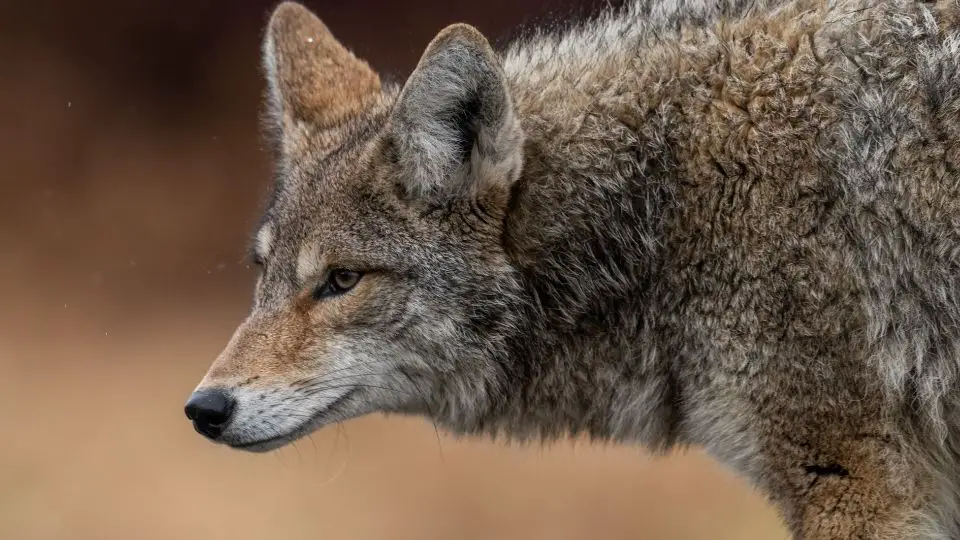
How big is a coyote?
Coyotes are typically about three or four feet long and about two feet tall, with a tail that is about sixteen inches. Coyotes usually weigh twenty to fifty pounds.
Their size can be compared to a medium-sized dog. Although they may appear similar to wolves, coyotes are smaller than wolves.
Where do coyotes live?
Coyotes live across North America and can even be spotted in urban areas. They enjoy being in plains, deserts, forests, and mountains.
Coyotes can be found in Canada, the United States, Mexico, and Central America. Note, Coyotes do not live in polar regions.
Where do coyotes sleep?
Coyotes and other mammals reside in areas called dens. Coyotes typically only sleep in their den if they are protecting pups in the den.
A den is a small area usually hidden by vegetation. A den may be created from a tree stump, rock, or burrow made by another animal. Coyotes will also dig in the ground to build dens. Their dens often are sloped on one side to allow for drainage.
Packs typically only sleep together if one of their pack members has given birth.
Without pups, coyotes may sleep in an open space or a hidden area. Urban coyotes may sleep near buildings, in pipes, or in parking lots. Coyotes will sleep in foliage, including shrubs, tall grass, and under an overgrown tree. They pick spots to sleep that will keep them hidden.
Where they choose to sleep also depends on the weather. Coyotes don’t mind rain, but if it is cold, they may sleep in a more enclosed area for warmth. If it’s hot, they may sleep in a more shady spot to cool off.
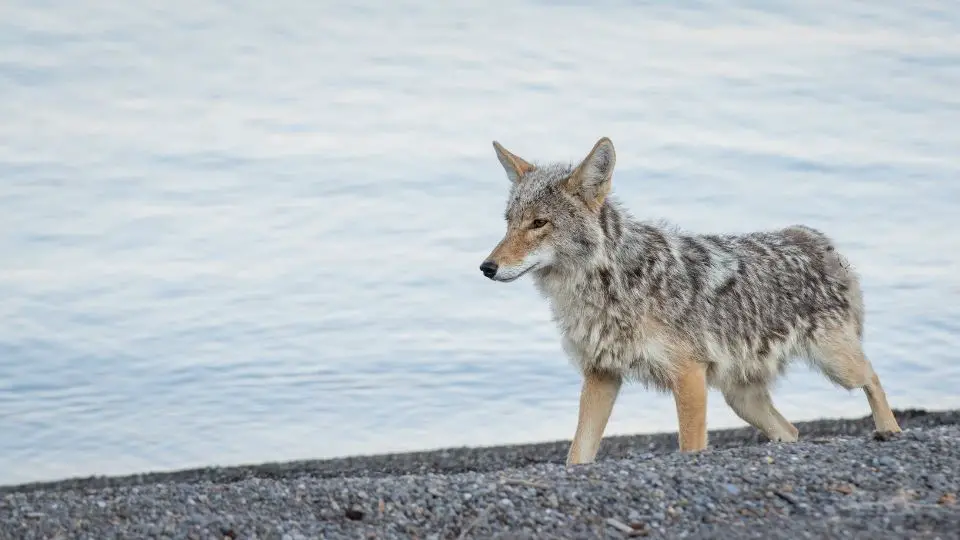
What do coyotes eat?
Note that Coyotes are omnivores, meaning they eat both plants and meat. Coyotes prefer meat and will eat a variety of small mammals, including rodents, birds, rabbits, and squirrels. They will also hunt larger mammals such as deer, moose, sheep, and elk.
Often Coyotes will hunt with their pack to take down a larger animal. Near ponds and lakes, coyotes will eat fish, turtles, and frogs from the water’s edge. Coyotes will also eat insects and nuts.
Coyotes in urban areas will raid trash cans to eat leftover human food. They also may attack pets outdoors, such as chickens, cats, and dogs.
How do you recognize a coyote?
Coyotes are part of the Canidae family, which means they are related to dogs, wolves, and foxes. This can indeed make it difficult to tell the difference between these animals since they have similar features.
Coyotes have large, pointy ears with a bushy tail that usually ends in a black tip. Their fur can be various colors, including white, gray, black, red, and brown. They have a black nose and yellow and golden eyes.
Below are a few animals that look similar to coyotes, including an explanation of their differences and similarities:
Coyote vs. Wolf
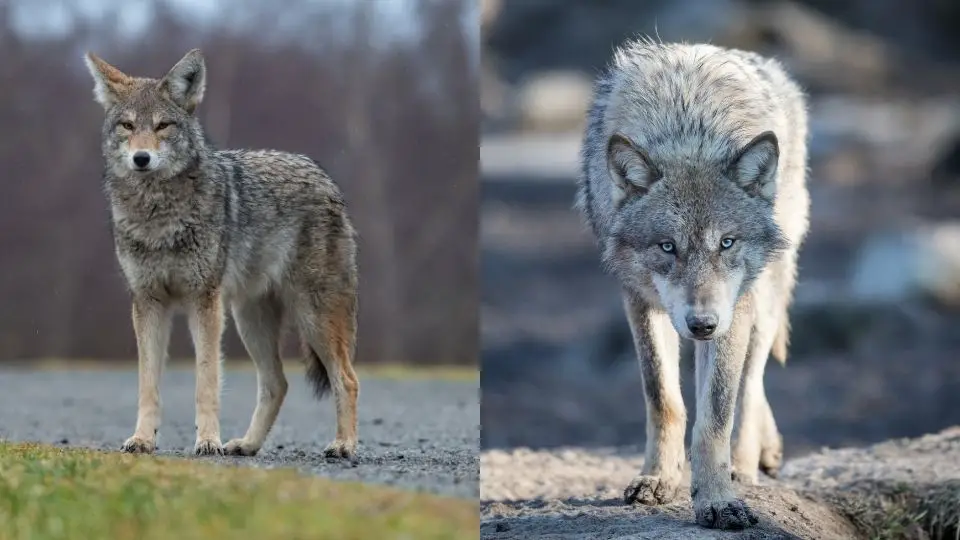
While Coyotes are often confused with wolves—the key difference is their size.
Wolves are bigger, taller, and longer than coyotes. Their coat colors can be very similar, but a gray wolf has a mix of gray, yellow, brown, and black fur, while a coyote has a blend of gray, red, and brown fur. Because of the redness of the fur, a coyote and a red wolf look quite similar.
Wolves have broader faces and broader snouts. Coyotes have a more narrow and pointed face shape. Coyote ears are taller and more pointed than wolf ears.
Coyote vs. Fox
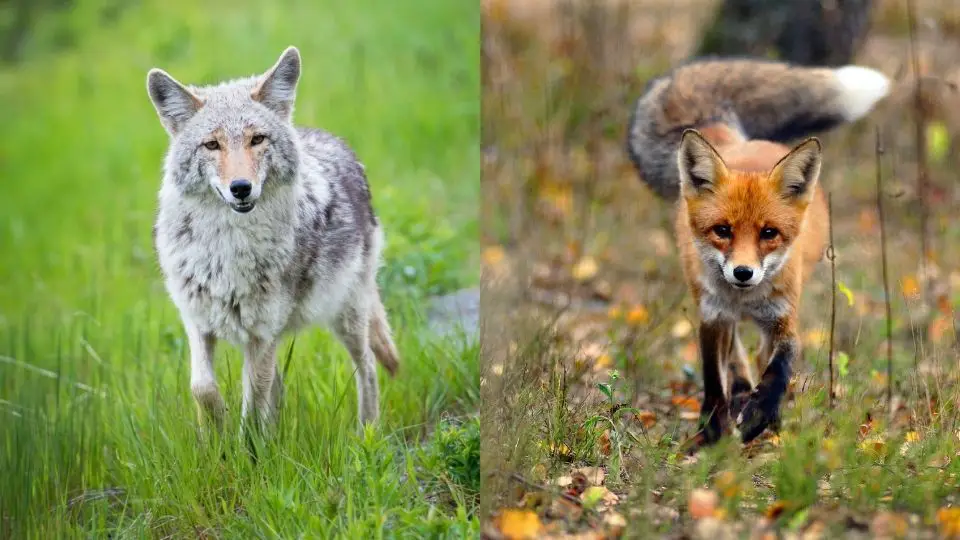
Another animal that is often commonly confused with a coyote is a fox. Coyotes are significantly bigger than foxes. Foxes have shorter legs than coyotes.
Fur color depends on the species of fox, and the red fox and gray fox look the most similar to coyotes in coat color. A coyote has a shorter tail than a fox, and a fox’s tail is bushier.
Coyote vs. Dog

A coyote’s scientific name is Canis Latrans, which means “barking dog.”
Even though coyotes are part of the dog family, these two animals are unalike. There are many different breeds of dogs, and each may look unique. However, coyotes often look the same.
A dog can come in many different shapes, sizes, and colors, but an adult coyote will typically be around the same size and colors. A coyote is a wild animal, while a dog is a domesticated animal. Their behaviors and diets differ even if a coyote is in captivity.
Dogs can learn to respond to human commands and eat dog food. Coyotes have a natural fear of humans and eat mammals. Coyote tracks are narrower and more oval-shaped than dog tracks.
The breed of dog that most closely resembles a coyote is the German Shepherd.
Coyote vs. Jackal

Coyotes and jackals are similar but are found in different parts of the world. Coyotes thrive in North America, while jackals primarily live in Africa and Asia.
Coyotes are bigger and weigh more than jackals. Coyotes have longer teeth than jackals. Their fur color is similar, but a jackal has a longer torso and a pointier muzzle. A typical Jackal’s legs and tail are shorter than those of coyotes.
Coyote vs. Coywolf
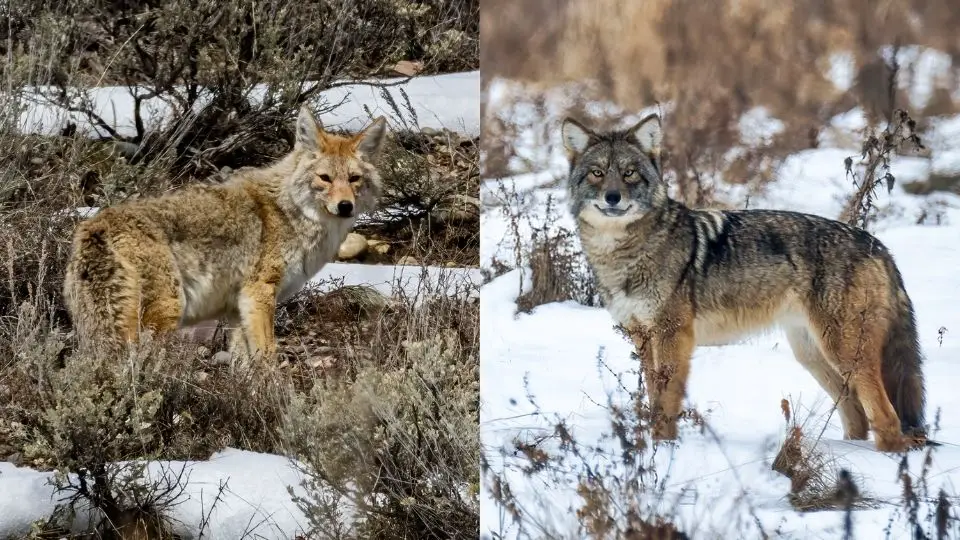
A coywolf is a candid hybrid of coyotes.
Coywolves are larger than coyotes, and even the pups are larger at birth. What’s more, Coywolves have larger, wider, and stronger jaws than coyotes. They also have bigger skull than coyotes.
Their coats are similar in colors, but coywolves have longer limbs and shorter ears than coyotes. Their ears are also more rounded than coyote ears.

